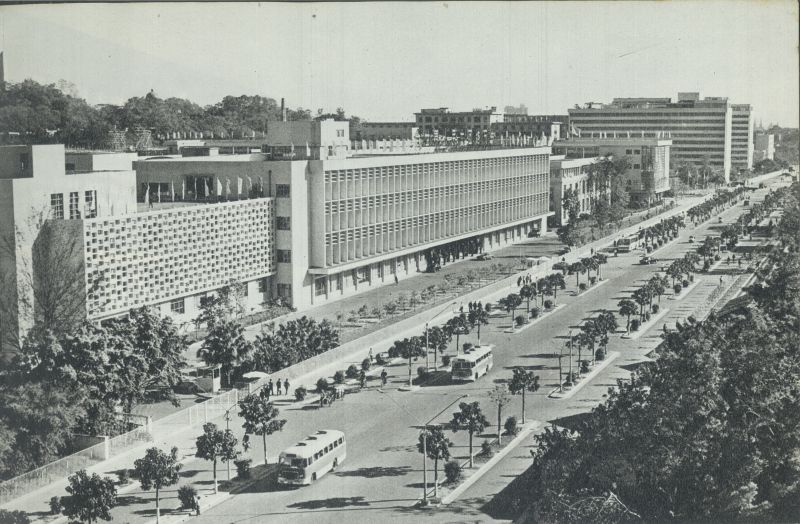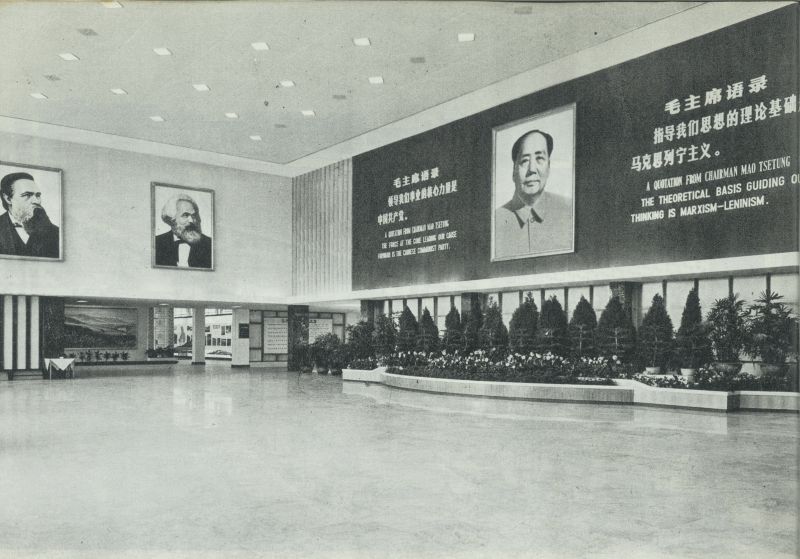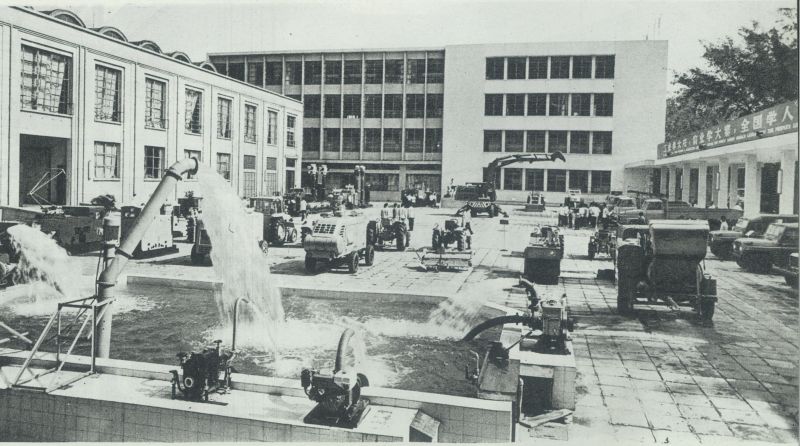Zian Chen
Canton Fair and Socialist Market Economy
In 1957, the Canton Fair (now the China Import and Export Fair) opened at the Sino-Soviet Friendship Hall in Guangzhou. It is still held every spring and fall, though the fair has moved four times since then. Prior to the Canton Fair, the first trade fair in Guangzhou was the South China Local Products Expo in 1951. A new socialist exposition hall was built alongside the Thirteen Factories—a historical enclave for foreign trade during the Qing Empire—and the venue hosted several more trade expos in 1955 and 1956. During the early years of Reform and Opening, the Shekou Industrial Zone, established by Hong Kong's China Merchants Group, would attempt to perform a similar function to the Canton Fair, but in a different way. The Chinese General Chamber of Commerce and a range of businesses in Hong Kong have long been key participants in the trade fairs held in Guangzhou. Even after the Canton Fair was established, it relied on previous organizations: the Chinese General Chamber of Commerce continued to send out invitations to Hong Kong businesses on behalf of the Canton Fair 1 .
With the deterritorialization of the neo-liberal economy, the importance of the Canton Fair in trade has declined over the last 15 years 2 . However, with the recent discussions of the Greater Bay Area and One Belt, One Road, the Canton Fair has become a more important part of the official history. Prior to Reform and Opening, the Canton Fair was an irreplaceable infrastructure for the Chinese socialist market economy, designed to circumvent Cold War trade blockades. At the time, these fairs required a host of related services—taxicabs, food service at foreign-oriented hotels, international communication and banking facilities, and contract default management—most of which did not exist in the rest of society and therefore relied on practical policymaking. Without access to archives, Zhou Enlai's speeches related to the Canton Fair serve as our only reference for this policy flexibility. For Guangzhou residents, the Canton Fair created cultural memories of "foreign-oriented" (shewai) things: the fair site, the Guangzhou train station, foreign-oriented hotels, taxicabs, foreign-oriented services, translators, and gardens that blended Chinese and Western styles. French anthropologist Marc Augé described hotels, train stations, and shopping malls as "non-places," because of how people experienced those spaces, but in socialist-era Guangzhou, this trade infrastructure left city residents with a kind of cultural memory and shaped the city's landscape and the nature of residents' memories. If these kinds of spaces were "non-places," they were not glossy, abstract functional spaces; instead, they allowed for the free imagination of other places. This idea is best reflected in the socialist architectural style of these buildings, which echoes the architecture projects that socialist China helped to build in Asia, Africa, and Latin America 3
- [1] Zhongguo Duiwai Maoyi Zhongxin (China Foreign Trade Center), Qinli Guangjiaohui (Personal Experiences of the Canton Fair), Guangzhou: Nanfang Ribao (Southern Daily), 2006, 224-226.
- [2] Lin Yi, Guangjiaohui: Duiwai kaifang de jiluzhe (The Canton Fair: A Record of Opening to the World), Zhongguo Zhengxie Zazhi (The CPPCC Magazine), January 16, 2019.
- [3] Ke Song. Modernism in Late-Mao China: A Critical Analysis on State-Sponsored Buildings in Beijing, Guangzhou, and Overseas, 1969-1976. Ph.D. diss, Melbourne School of Design, 2017. *

China Export Commodities Fair Liuhua Road Pavilion was built and opened in 1974
Source: Guangzhou Architectural Fact Collection (Guangzhou Jianzhu Shilu), Guangzhou Design Institute (Guangzhou Shejiyuan),1976

Prelude hall
Source: Guangzhou Architectural Fact Collection (Guangzhou Jianzhu Shilu), Guangzhou Design Institute (Guangzhou Shejiyuan),1976

"Emulating Dazhai on Agriculture" hall
Source: Guangzhou Architectural Fact Collection (Guangzhou Jianzhu Shilu), Guangzhou Design Institute (Guangzhou Shejiyuan),1976

Machine exhibition plaza
Source: Guangzhou Architectural Fact Collection (Guangzhou Jianzhu Shilu), Guangzhou Design Institute (Guangzhou Shejiyuan),1976